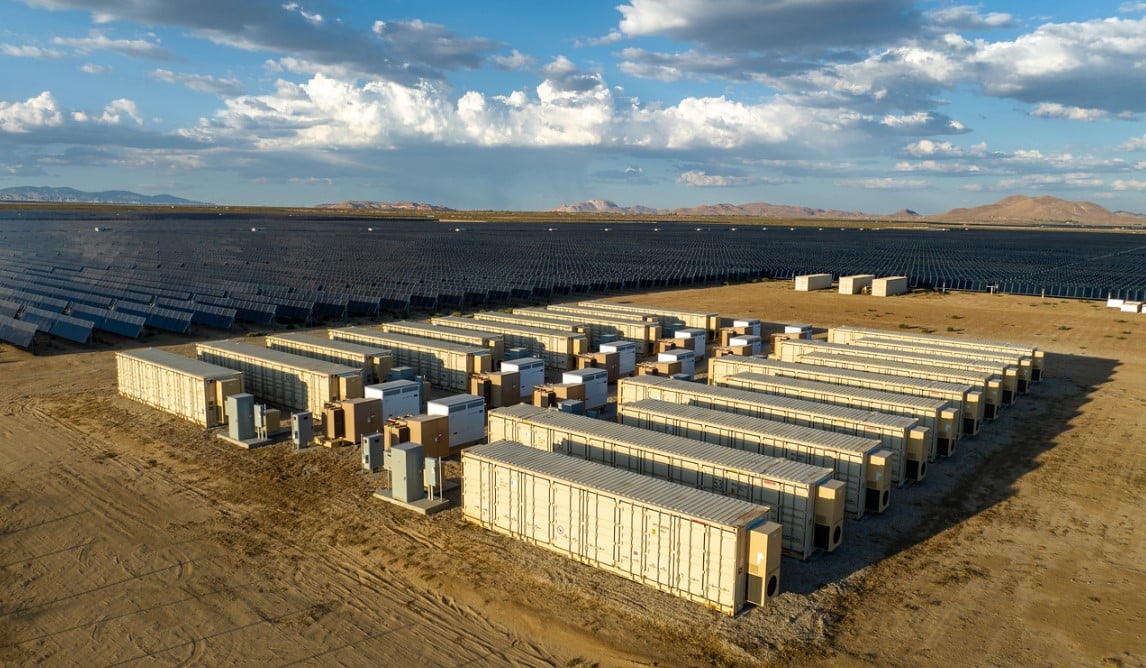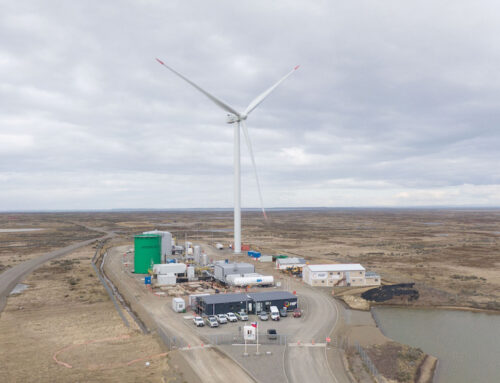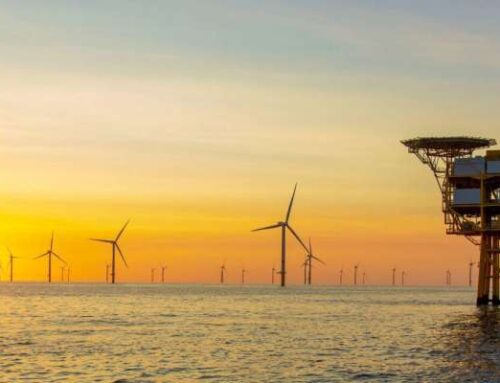Working through a queued-up and ageing grid
October 7, 2024

Spanning more than 200 years, the US grid has been continuously evolving. Although, the goal of this article is not to go back to the times of Thomas Edison and Nikola Tesla and the selection of the AC technology to transmit power over long distances, it is worth looking back at its history to better understand its current situation. This is especially the case with approaching 3TW of electricity generation awaiting grid connection at the end of 2023, of which over 1TW is from solar PV alone.
The evolution of the grid over time is essential to improving the grid of tomorrow, as we are currently in the latest generation of electricity with renewables. Dr Guhoui Yuan, programme manager for systems integration at the US Department of Energy (DOE) Solar Energy Technologies Office (SETO), explains that the US has gone through several of these generational changes.
The first occurred in the 1930s, during the New Deal era, with legacy companies that still exist today, such as the Bonneville Power Administration (BPA) and Tennessee Valley Authority (TVA).
This was then followed in the 1950s and throughout the 1970s with the proliferation of coal and nuclear generation. At the end of the century and beginning of the 2000s, natural gas generation marked the third wave and is today the technology with the highest electricity generation in the US, says Yuan.
The latest evolutionary step—to renewables—is not without issues, as more and more capacity is being built and waiting for grid connectivity, while facing an ageing infrastructure.
However, “the bigger challenge here is that this current infrastructure was designed for the legacy system, which is a one-way power flow and a centralised generation”, explains Yuan.
The current map for independent system operators (ISOs) and regional transmission organisations (RTOs) as we know it was formed out of the Federal Energy Regulatory Commission (FERC) through Orders No. 888 and 889 in 1996 for ISOs and FERC Order 2000 in 1999 for RTOs. Yuan explains that this was done to deregulate the wholesale market and reduce the cost of electricity across the US. This allowed different states/players to get together and form a bigger market, where a project built in a given state could sell its electricity in a different one, Yuan adds.
Today, the US is divided into seven ISO/RTOs: CAISO, ERCOT (although this is not under FERC jurisdiction), SPP, MISO, PJM, NYISO and ISO-NE; along with three regions: Northwest, Southwest and Southeast.
Even though this article will focus more on the transmission grid that concerns utility-scale solar PV and other renewables, it is worth noting that the distribution grid is a significant part of the whole grid, too.
The distribution grid encompasses not only behind-the-meter projects but also community solar, which has been growing in the past few years.
Michele Boyd, programme manager of the Strategic Analysis and Institutional Support team at the DOE’s SETO, says both the transmission and the distribution grid are connected and impact each other.
However, a lack of visibility between both levels creates another layer of difficulty. “The transmission operators have no visibility whatsoever to what’s going on with distribution and they can’t see how that variability is going to impact them,” adds Boyd.
Over 1TW of solar PV waiting grid connection
The connection between the transmission and distribution grid resonates even more today, with over 2.6TW of capacity awaiting a grid connection at the end of 2023, according to a recent report from Lawrence Berkely National Lab (LBNL).
In only two years, the capacity waiting for grid connection nearly trebled. In that span of time, the appetite for renewable energy has continued to increase, and policies across all levels (local to federal)—chief among them the Inflation Reduction Act (IRA) in 2022—have boosted interest in developing renewables across the US.
At the federal level, the Biden administration set a target to reach a zero-carbon electricity sector by 2035. That is on top of the country’s most important environmental legislation, the IRA. “It kind of supercharged what was already a vigorous environment for clean energy development. It doubled down on that,” explains Joseph Rand, lead author of LBNL’s 2024 “Queued up” report.
“That, to some degree, explains the growth in volume that we’ve seen over the past several years. But at the same time, you have to ask if that cumulative capacity in the queues is also increasing because projects are coming in at a faster rate than they’re going out,” adds Rand.
This growth in the past two years has been led by two technologies in particular: solar PV and energy storage. They each represent 1TW of queued-up capacity. Last year, solar PV alone added more than 300GW of capacity in the interconnection queues.
“We’re going to have a real problem over the next few years if these queues don’t get unstuck. There just aren’t going to be any viable projects to build, because there’s nothing that has made it through the interconnection queues. And that is a product of poor planning at the RTO level,” says David Mindham, director of regulatory and market affairs at developer EDP Renewables North America. Mindham adds that this is actually a technical issue that needs to be addressed or “find out which projects deserve to be built first or get through the process quickly”.
The two states—California and Texas—that lead in installed solar capacity also lead in PV capacity awaiting grid interconnection. In Texas, 134GW of solar PV capacity is in the queue, while 131GW are waiting in California. When combining all technologies, California is ahead with 445GW, half of which (275GW) is from energy storage.
If storage could be used as a solution to ease grid congestion and grid issues, it would still need to fix a key challenge for the technology when applying for grid connectivity. “They will require you to study charging a storage asset at peak load. That’s a ridiculous scenario. Nobody would ever do that. It’d be cost-prohibitive. You’d be discharging energy at that point. And that can lead to extra network upgrades,” explains Mindham.
In a move to look more closely into the issue of interconnection and involve all stakeholders, the Department of Energy launched the Interconnection Innovation e-Xchange (i2X) programme in 2022. The goal behind that programme was to have all the stakeholders talk about the issues, questions they might have and the challenges needed to overcome. For a more in-depth look at i2X and the interconnection issue, you can read a feature co-authored by Boyd in PV Tech Power Volume 38. Following the launch of i2X, the DOE released a transmission roadmap.
“[The roadmap] is really just laying out what’s available. What’s extremely helpful is there are tables for every solution laid out by stakeholder groups: here’s what the regulators should be considering; here is what researchers should be thinking about; here’s what developers should be thinking about doing,” explains Boyd.
Boyd adds that regulation is not enough and that many more decisions need to be made along the way. Moreover, i2X is one of many programmes or tools that the DOE has been working on or is currently working on, with the mindset of always giving the different players the choice to implement what is best depending on the needs of each particular region.
“We are not trying to make everyone implement the exact same solution the exact same way, it’s just not going to be possible. That’s just not how the electricity system in the US works,” says Boyd, adding that the solutions will need to be tweaked due to different law requirements from state to state. “You’re going to have to tweak the solutions. They are not a one-size-fits-all.”
Developing renewables in today’s grid
The challenge for developers is not just the number of projects awaiting grid connection; in certain regions, projects also take longer to be built, according to data, albeit limited, from LBNL’s report. In the CAISO territory, in the last five years—between 2018 and 2022—projects took over two more years to be built. If in 2018 a project took over four years to reach a commercial operation date after securing an interconnection agreement, in 2022 that number rose to over six years.
John Weiland, chief development officer at Leeward Renewable Energy, highlights the need for reforms to permitting processes, in order to solve that issue: “If you’re unable to get projects permitted and constructed in a shorter timescale than a decade, there’s a problem there.”
“We need a backbone transmission system built that accommodates the next generation of renewables,” says Mindham, adding that: “Some regions are better than others. We’ve seen that sort of backbone proposed in two regions.”
The two regions Mindham points to that are more advanced in the issue of building up more transmission lines are MISO, which has a “dedicated long-range transmission plan”, and California, which has a technical project planning (TPP) process that aims to help incorporate more renewable resources into the grid.
Weiland, meanwhile, praises Texan grid operate ERCOT’s ability to quickly connect a project to the grid, although with a big caveat. “ERCOT really is the differentiated case, because of the way the market’s designed. It’s not a capacity market. It’s an energy and ancillary service market. And the connect and manage approach enables that expeditious connection to the grid, but it comes with a trade-off, which is real-time curtailment risk,” explains Weiland. A more in-depth analysis of ERCOT’s interconnection process and what could be learned from it for other regions can be read on PV Tech Power 40.
The bottom line is that more investment in transmission infrastructure is needed to handle the volume of projects coming forward. “We need a tremendous amount of transmission built out that just hasn’t been done in any meaningful way over the last decade,” says Mindham.
A compounding factor is that projects are also staying longer in the queue before being withdrawn due to the increased costs associated with that, says Mindham.
“The increased cost milestones mean we have so much money into each development project. By the time it gets through the queue, it’s harder to withdraw,” he explains. “There’s a premium assigned to those projects, so they stick around longer because developers can’t write off that cost as easily and can’t make rational decisions any longer because of the amount of costs that are sunk into a project.
“Now you have stacking problems because there are more projects than there should be in the queue. And we can’t get rid of any of them because of the amount of cost to leave the queue.”
From a developer standpoint, Mindham explains how EDP Renewables proposed several grid-enhancing technologies that can work as a stopgap solution to solve the problem for a few years at a relatively low cost.
However, Mindham says that EDP Renewables has faced much resistance from transmission owners to use these low-cost solutions, despite being able to save thousands of dollars in congestion costs per month. “If we opened a breaker on the transmission system, which is like a transmission reconfiguration, it would save hundreds of thousands of dollars a month in congestion costs. Just by opening a breaker: that’s a zero cost.”
Weiland explains that despite the Federal Energy Regulatory Commission (FERC) Order 2023 aims to solve some of the issues relating to grid applications—and imposing penalties to operators that do not comply with the order—it could have taken a step further. “I’d like to see it go a bit further and actually provide a carrot to the transmission providers in that if they outpace the prescribed timelines, and outperform the expectations, they get some sort of rate incentive.
“Part of the issue is that there isn’t tremendous incentive to date for the transmission providers in studying these projects,” adds Weiland.
AI for the grid of tomorrow
As the US moves to decarbonise its electricity system and integrate more renewables and clean energy into the grid, the country aims to make it a “smarter, cleaner and a more dynamic grid”, says Yuan, adding that this presents several challenges in terms of managing the grid “to ensure its reliability, resilience, cybersecurity as well as affordability”.
Looking into the grid of the future, the use of artificial intelligence (AI) will play an important role in improving the grid. The US Department of Energy has been working with AI technology for over a decade, says Yuan. Among its applications is the use of AI for solar forecasting, due to the nature of dependency of some renewable technologies on the weather. “In order to operate [the grid] reliably, we need to know ahead of time how much solar electricity will be generated.”
Another important area of use for AI is cybersecurity. “We actually use AI to identify some anomaly patterns in the software, to help us identify if there is a malicious attack or if somebody has tampered with the software,” explains Yuan. With the increased amount of devices connected to the grid, the communication and data between these devices and the grid is too high for the human workforce to monitor it all and at all times. AI comes into play in order to keep improving the model and making sure it is prepared for any possible attack and defend itself from any possibility.
While looking into the future of the grid, SETO also looks towards the past in order to learn from recent events in order to be better prepared, especially when it comes to extreme weather events. Looking into historical data on climate events could help adjust and predict when the next 500-year flooding event will happen, or the next 100-year heat wave will happen. As these rare events might actually happen every decade or 20 years, they are no longer as rare as expected and require the system design to accommodate them and prepare in case of any outages, explains Yuan.
“We should not throw away the history, because a lot of the outcomes and impacts are the same. We are looking at the history and looking at the changes in the technology that we have,” adds Yuan.
One thing is sure is that all the issues and challenges related to the grid will not be fixed overnight and will take time to be addressed. The implementation of the solutions proposed by the US Department of Energy in i2X and its roadmaps will take time, says Boyd.
“Trying to implement the solution sets, both at the distribution and transmission level, is just going take time. We’re trying to help with i2X and make sure that it moves as fast as possible,” concludes Boyd.
Search
RECENT PRESS RELEASES
Related Post




